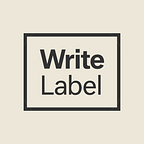How to Write Compelling Greeting Cards
by Maria Wojciechowski and Nick Jack Pappas
When reviewing copy for greeting cards, clients are looking for engaging and unique ideas that can appeal to a broad audience. While writing greeting cards can be fun and rewarding, it is not without its challenges. American Greetings, for example, was founded in 1906, meaning they have over a hundred years’ worth of copy and ideas. So, while your first idea might be great, it is likely that it’s already been done before.
Below are some tips for writing unique AND universal greeting card ideas.
- Google your idea. As with all creative copy, it is best to ensure that you’re not accidentally plagiarizing another’s work.
- Write it the way you’d say it. Unless otherwise requested, most cards should feel conversational. Think about if you were to call a friend to wish them Merry Christmas, the chances of you saying “Many tidings to you and yours!” are slim.
- Start in the Middle. The person sending the card already knows the person receiving it. Don’t feel the need to over-explain the relationship. Doing so not only is a waste of copy, but it also limits the range of potential senders and recipients. Cards should be suitable for many, not specific to one.
- Keep it real but positive. The point of sending a card is to lift someone’s spirits
- Avoid topical copy. When alluding to pop culture, make sure references are ‘classic.’ Greeting Card copy can take months to publish. Will a reference to something like the “Kiki Challenge” still be relevant by then? Probably not.
If you’re struggling to write a card that is universal, write down your original idea and then edit for success! A few subtle changes can make your copy more relatable while keeping the same sentiment.
“Rushing downstairs on Christmas morning” → “The excitement on Christmas morning.”
This edit includes people who live in one-story homes.
“You’re an amazing wife, and I love being your husband.” → “You’re an amazing wife, and I love being married to you.”
This edit includes LGBTQ+.
“Thanks for watching cheesy rom-coms with me” → “Thanks for watching movies I like with me”
This edit includes anyone who likes any genre their partner doesn’t.
“I’d swipe right on you all over again.” → “I’d totally swipe right on you.”
This edit includes those who didn’t meet on an app.
“The office won’t be the same without you.” → “This place won’t be the same without you.”
This edit includes non-office environments
Decoding the Brief:
Who is the card for?
When reviewing the brief for “Greeting Card Ideas” projects, you will likely see one of the following descriptions for recipients.
“General” — This card could be given to anyone. Avoid identifying features of the person.
“Romantic” — This card is for romantic partners. ‘Romantic’ refers to the type of relationship, not necessarily tone. Don’t imply gender unless otherwise requested
“Masculine” or “Feminine” — The recipient is likely to be male or female, but not necessary to say the specifically in copy. In this case, it is ok to lean into non-offensive gender stereotypes (EX: men prefer beer, women prefer wine)
“Family” — This card can apply to any member of the family (Ex: sibling, cousin, grandparent, etc.).
Who is sending the card?
“Unspecified” — any identifying features such as gender, age, etc, should feel open — unless otherwise mentioned
The six most popular types of cards:
- Compliment: “You light up the room!”
- How much you mean to me: “You make my life so much better!”
- Wish: “I hope you have an amazing birthday!”
- Love: “I will love you forever!”
- Gratitude: “Thank you for all that you do!”
- Thinking of You: “Just wanted you to know you’re on my mind.”
For any remaining questions, feel free to email Team@WriteLabel.com
If you are not currently segmented for “Greeting Card Ideas” but would like to be considered. Take the assessment test here
Happy writing!
